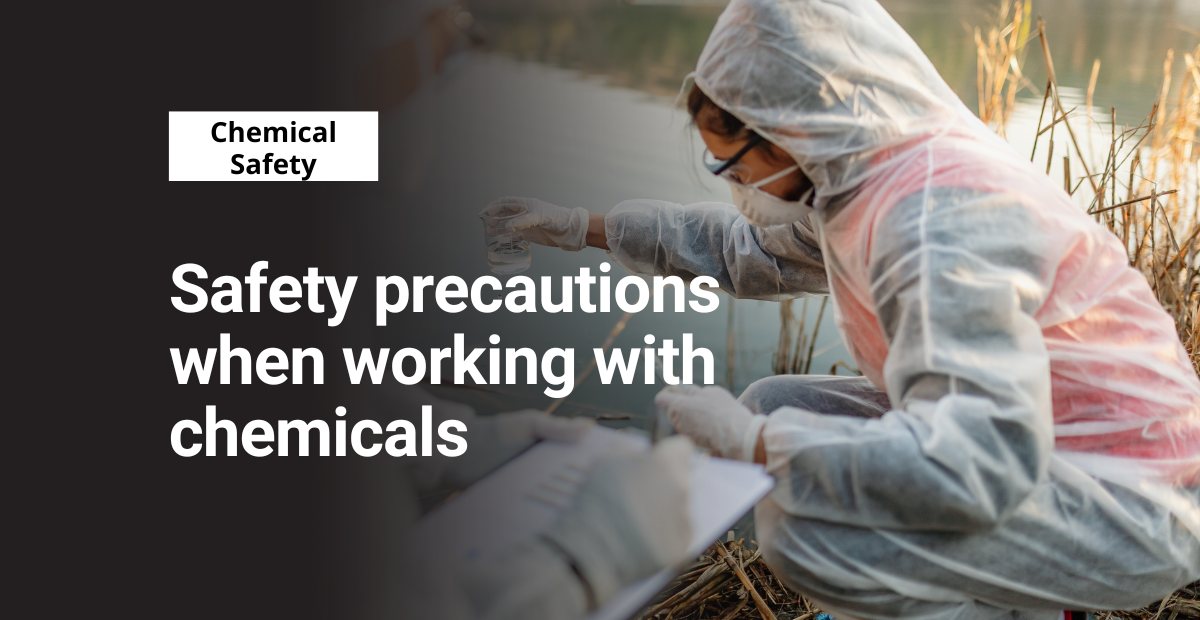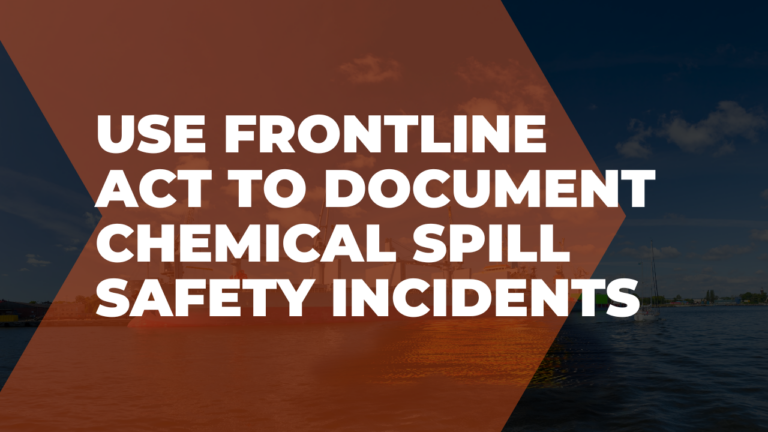Chemical safety precautions are essential to preventing serious workplace injuries. And because workers across all industries handle chemicals, every company should teach how to properly handle them. Exposure can happen at any point during the handling, storage, and transport of hazardous chemicals.
In this article, I’ll cover the main regulations your training should cover. Plus, I’ll provide some basic handling rules for employees to follow and some additional resources.
Free template!
Use this Word template to create a detailed chemical inventory log of what you have onsite.
Know the regulations
One of the best-known regulations regarding the employer’s responsibility when hazardous chemicals are in the workplace is OSHA’s Hazard Communication Standard (HCS). The HCS requires employers to develop and disseminate chemical safety information that is accessible and understandable by workers.
This means that employers must keep a written Hazard Communication (HazCom) plan and train employees on chemical labels, safety data sheets (SDSs), and how to handle chemicals appropriately. Conductors must provide HazCom training for employees at worksites with hazardous chemicals.
Responsibility does not end with training employees. Employers are also responsible for identifying and evaluating respiratory hazards in the workplace. There are multiple types of Occupational Exposure Limits (OELs) that have been established by various organizations. You can find many of these listed on OSHA’s chemical hazards and toxic substances page. OSHA maintains enforceable permissible exposure limits (PELs) which are limits based on an 8-hour time-weighted average (TWA).
The TWA is also referred to as an action level where certain activities, such as exposure monitoring and medical surveillance, are required. The allowable airborne concentrations are under the action level and never reach the ceiling limit (the exposure limit a worker’s exposure must never exceed).
The PELs regulations span across the general, maritime, and construction industries. Business owners may need to complete testing to assess the number of airborne concentrations of chemicals that employees are exposed to during their workday. The analysis will show if the first line of defense, engineering, and work practice controls are or are not working and if respiratory protection will be required.
Chemical handling safety precautions
Below is a list of rules for employees to handle chemicals safely. Present these tips during your standup meetings and get employees by having them add their own rules. Involving employees in the rulemaking process will create a sense of ownership. Plus, they’ll be more likely to follow the precautions.
- Maintain awareness, be cautious, and plan ahead. Perform a mental safety assessment to consider what could go wrong during the execution of your work task and then pay close attention to the task at hand.
- Follow your company’s established work procedures and perform job duties in accordance with your training.
- Read labels and the safety data sheet (SDS) to understand hazards and precautions before you start working.
- Always wear the required personal protective equipment (PPE). As a rule of thumb, inspect PPE carefully before use and replace it when it wears out.
- Ensure all containers have labels that match what’s in them. Immediately report any damaged containers or illegible labels to your supervisor. Do not use the material if not contained or labeled properly.
- Do not use chemicals for anything other than their intended purpose.
- Never eat or drink while handling chemicals.
- Do not use cosmetics or handle contact lenses while handling materials.
- Always clean thoroughly with soap and water after handling chemicals.
- Ensure that you store materials separate from incompatible materials.
- Store materials in ventilated, dry, and cool areas.
- Cleanup your workspace and surfaces at least once a shift to minimize contamination risks.
- Understand what to do during an emergency. This means knowing evacuation procedures, reporting procedures, what to do in the case of a fire or spill and during a medical emergency where a co-worker or yourself may have become injured or exposed to chemicals.
- If you aren’t sure about the appropriate way to handle a certain chemical, don’t be afraid to ask your supervisor. It is better to ask to receive the correct guidance than to assume wrong information when working with chemicals.
Frontline ACT for chemical incidents
Our action tracking system, Frontline ACT, makes documenting chemical safety incidents easier than ever.
Additional resources
The International Chemical Safety Cards (ICSC) is offered to a targeted audience of workers and safety and health professionals. The material is provided for free as a part of a joint effort between the World Health Organization (WHO) and the International Labour Organization (ILO).
You can also find great resources on NIOSH’s website. Their Pocket Guide to Chemical Hazards and the Current Intelligence Bulletins provide up to date information regarding chemical safety precautions and other topics.





